St Peter's Church ⛪
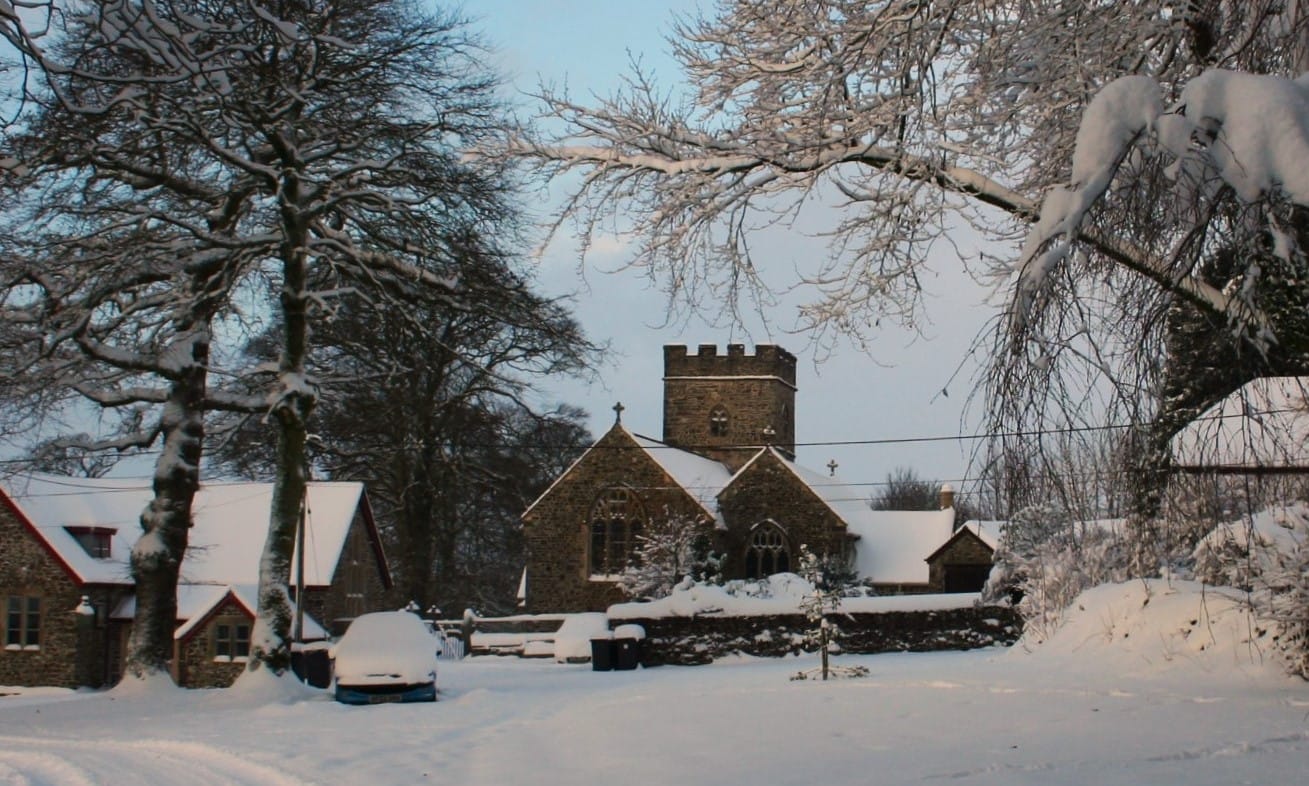
The Edgemoor Group's website is at: https://www.edgemoorparishes.org.uk
The Churchwarden at Rose Ash is Mrs Caro Hammick (01769 550409)
Currently there are two services a month at St. Peter's:
First Sunday each month we hold Morning Prayer at 11.15am
Third Sunday each month we have an 8.30am Holy Communion
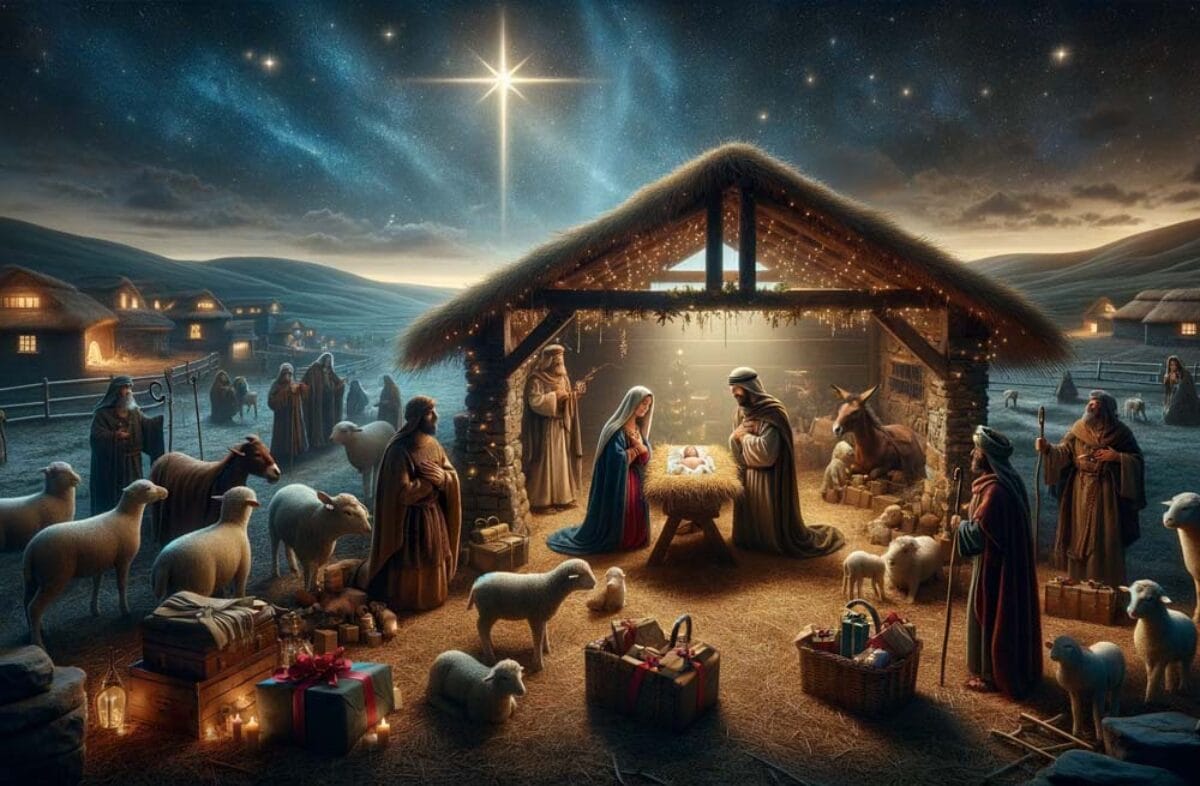
Christmas!!
Our carol service this year is on Friday the 20th December at 6pm, and it will be a fun evening, with many surprises for children and adults alike.
So please do come along and join the fun - and celebrate a Christmas with a bit more of the old-fashioned spiritual-values and a little less consumerism!! It really can be rewarding and worthwhile - and you will not be asked to shake hands with anyone in the church.....we are a bit too old fashioned for that sort of thing!
This is YOUR church! You are very welcome to come to services, or just to come and see it, or to arrange events in it so that it remains a central part of your community.
Please forgive us for immediately showing a QR code below - but the reality in this modern world is that we are always in need of your kind generosity to keep the church building in reasonable condition.

Please use this QR code to donate to our church to help us to maintain it for future generations. Thank you very much !
Church restoration projects
St Peter’s is a lovely example of a classic Devon church with a four-square tower. Dating from the 15th century, it was substantially rebuilt in the late 19th century, having been allowed to slide into a semi-ruinous state by the then Rectors of Rose Ash, the Southcomb family. In one comment, Rose Ash Church is described as being one of the worst examples of a neglected parish church, with parts of it having collapsed and become unusable as a result.
The Southcombs redeemed themselves (and their reputation) by paying for a substantial amount of work that was carried out between 1888 and 1892. Unlike some other churches where the Victorian zeal for “correcting” the errors of the past resulted in rather heavy and somewhat boring interiors, the work at Rose Ash was sensitively carried out.
The gables
By the end of the 20th century, the church was again in need of a bit of TLC. The result was a restoration project funded in part by the lottery, as well as local subscription. Part of the project included replacing the coping-stones on the gables. Although the original stonework had been a Doulting limestone, an Orange Guiting limestone was used in the restoration work.
Sadly, the Guiting started to fail badly after only some ten years, partly as a result of the way the stone was cut, and also the weather up here at Rose Ash. By 2015, the situation had deteriorated to the point that large chunks of stone were falling from the gables, together with bits of the concrete cladding that had been used as a temporary weatherproofing “fix”. (This was somewhat disappointing as the predicted life of this sort of stone was supposed to be in the order of 300 – 400 years!)
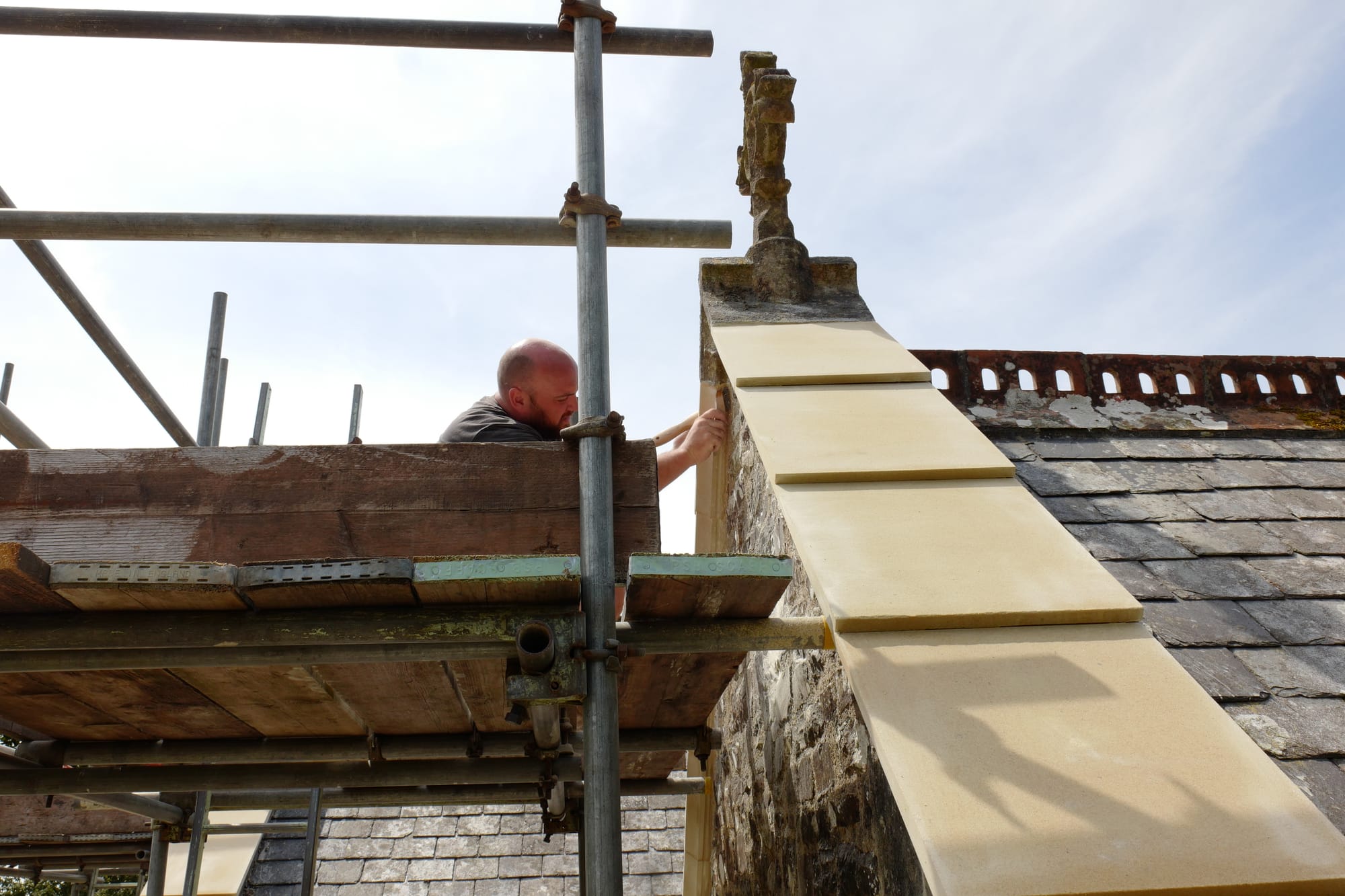
So we had to raise some £50K to replace the stonework and to make good several areas of flashing that hadbeen torn away by the falling copings. We raised the money and in June 2024 the work started. It was completed by the end of July. and we had a live recital of Bach's cello suites to celebrate the event.
The bells
Rose Ash has a good peal of bells, most of which are now almost 300 years old. However, the mechanism used to support and ring the bells is now a bit worn out and, by some accounts, at the end of its life. In addition, the bells should be turned so that the clappers do not wear a hole in the side of the bells themselves!

All this means we will have to remove the bells, and then replace much of the structure and mechanism in the bell chamber, although the oak-frame, made by Harry Stokes of Woodbury back in the 19th century, will be retained – albeit with steel strengthening.
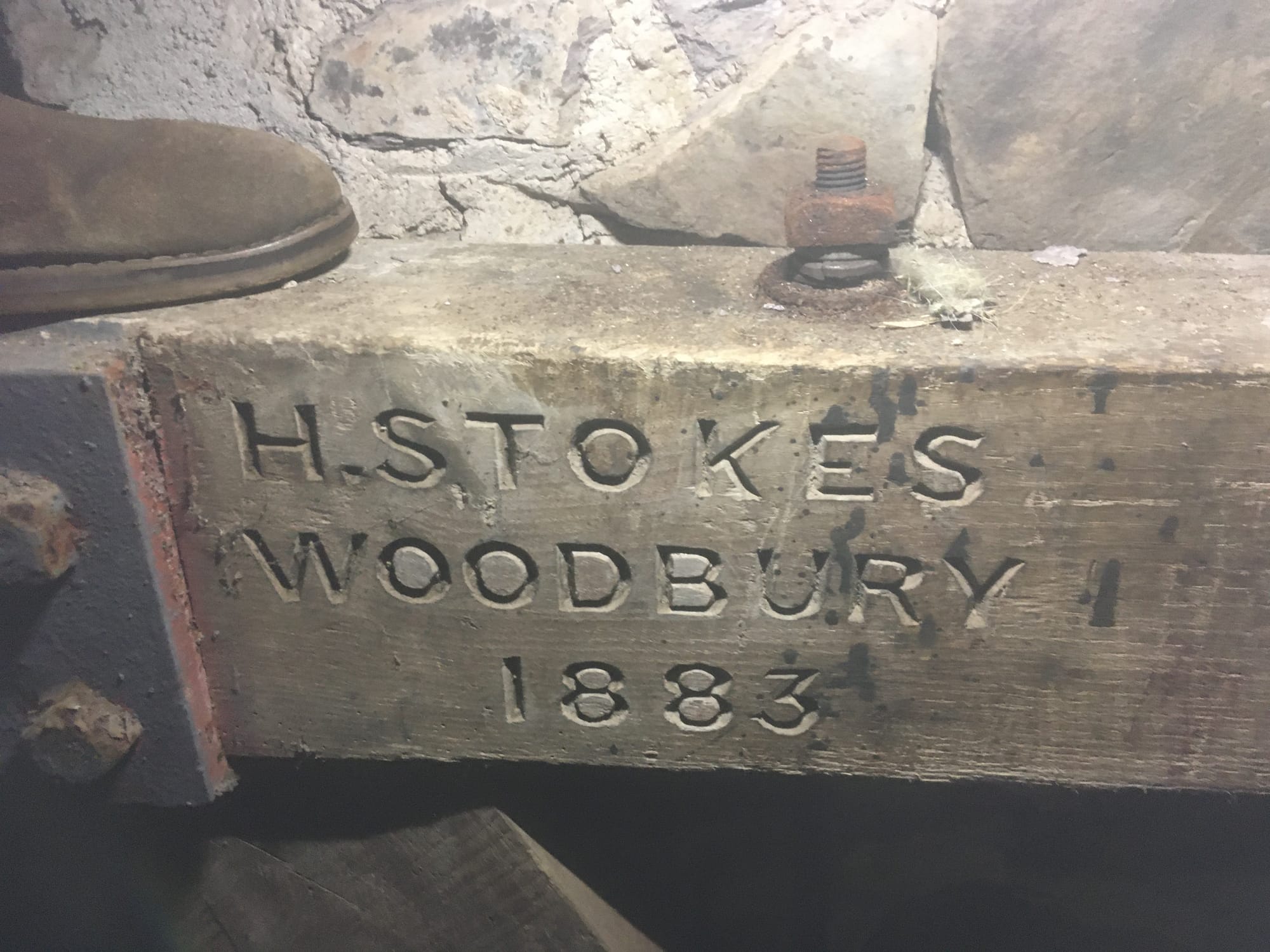
Once again, this project has to be paid for by some means, and we are putting together appeals and applications for grants from local and national trusts. We are looking for about £50,000 and have so far raised about £18,000 in grants and gifts. Can you help us?
Other projects
The aim is to build upon recent achievements, getting more community involvement in the church as a superb venue for arts and crafts exhibitions, local-history talks, live cello-recitals, and music-evenings. Future events include a "Rod Stewart" and other music-evenings, local-history talks, an art-exhibition etc., presentations on current affairs and the Universe (we hope to host an astronomy star-party), and we also hope to host bell-ringing competitons in time for the 300th anniversary of the installation of the bells in 2028.
We need to repair the tower-roof and parapet which are letting water run onto the bell-mechanisms. We need a safe companionway tower-access ladder; many people now will not, or simply cannot, climb the old 20ft vertical ladder to get to the bells and tower structure. The lightning-strike at Bishops Nympton was a reminder that we need a lighting conductor on the tower-roof; the church has never had one.
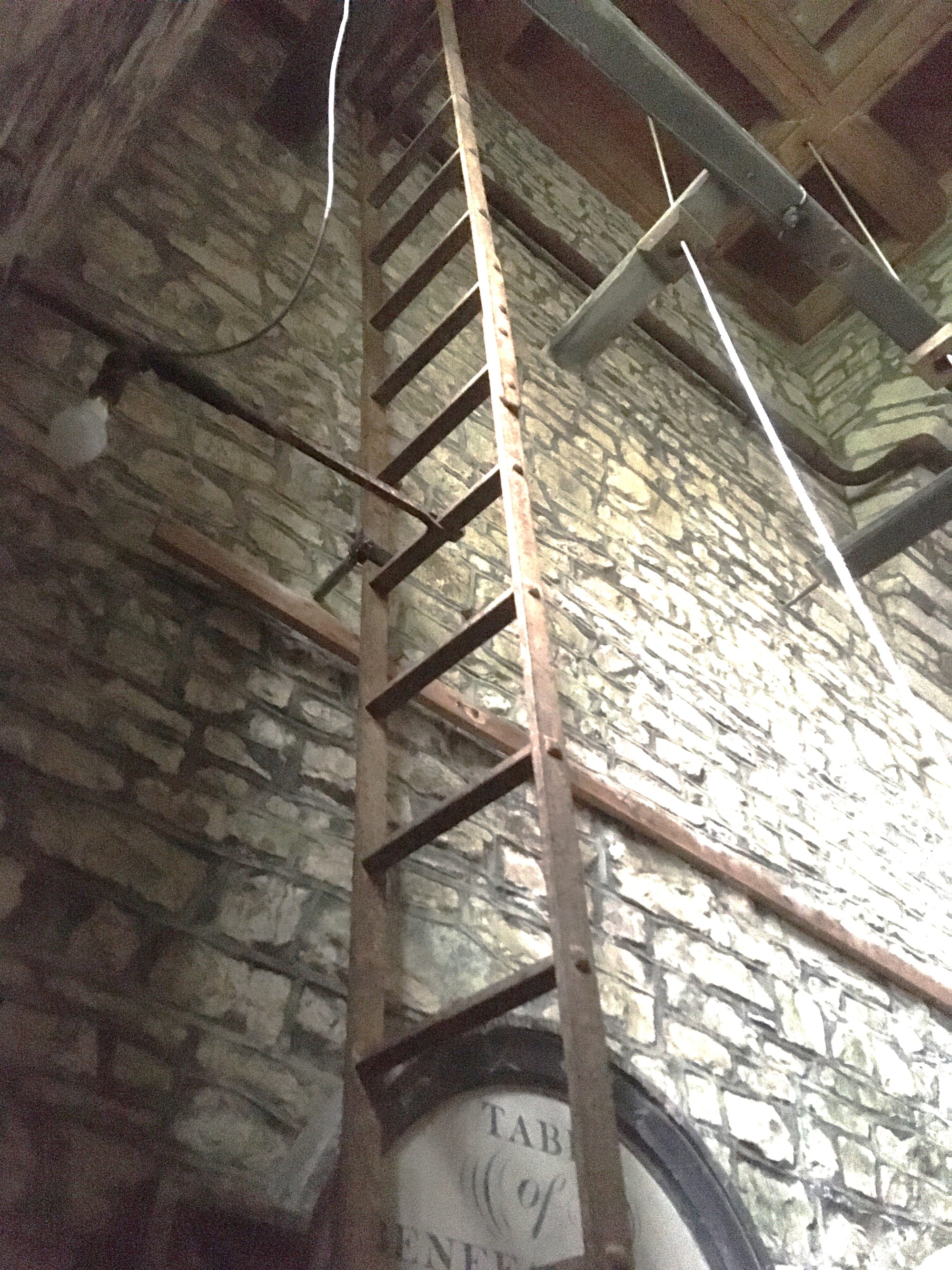
Finally, in the tower, we need safer LED lighting and emergency lighting in the event of a power-cut, and power-sockets in the ground-floor ringing chamber to allow additional lighting, or the use of heaters in winter.
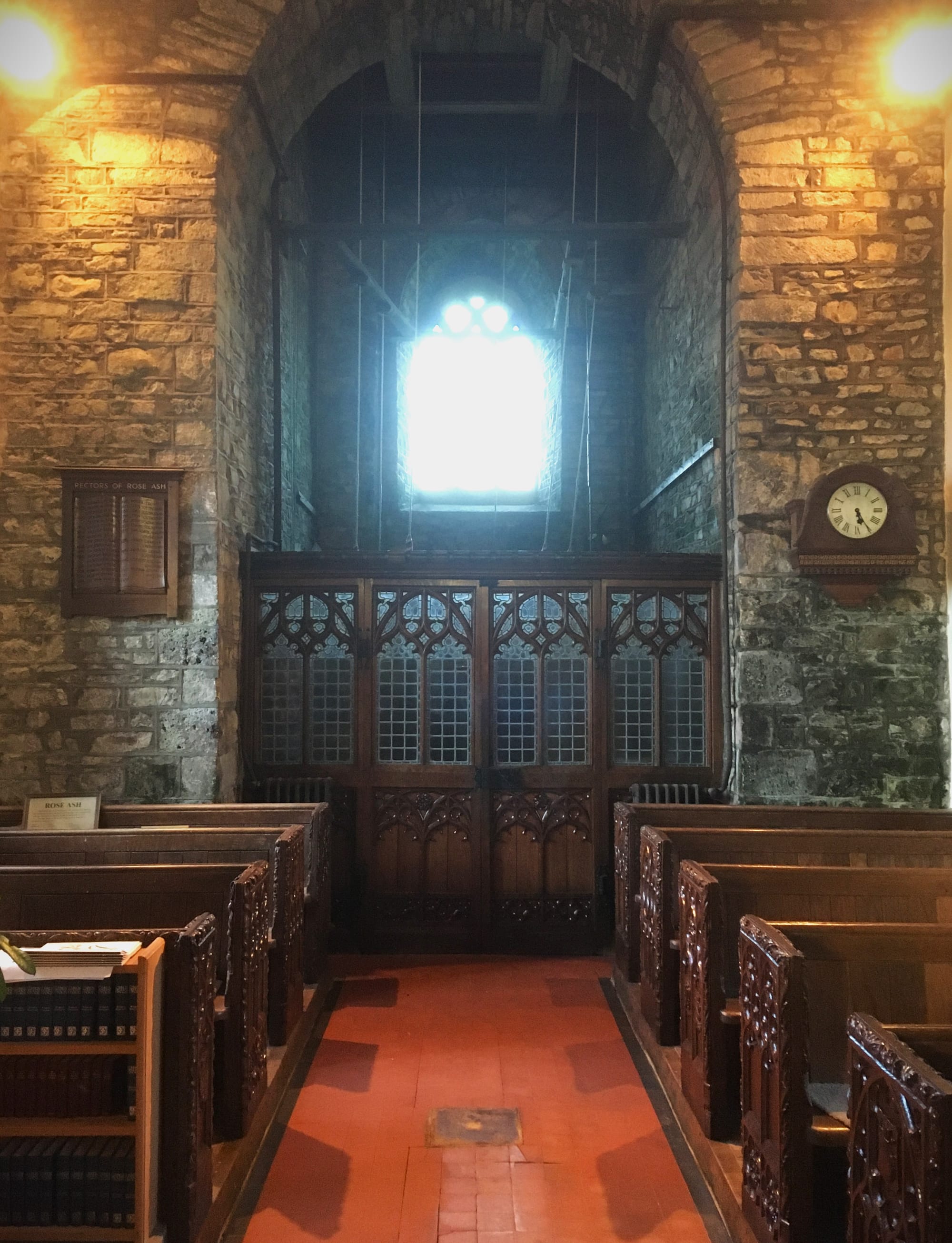
We want people attending events or services to be more comfortable, and reduce our carbon footprint, by installing highly efficient heated seating-pads on the pews – which will also cut our heating costs by some 70%. A vicar at one church we spoke to said that peope were so comfortable with the pew-heating that they are reluctant to stand up to sing hymns etc.!
We want to improve the lighting by using LEDs, with up-lighters in the chancel to illuminate the vaulted ceiling and medieval roof-bosses. We need power sockets to allow a more diverse use of the church; power to musical instruments, or for video-projectors for talks and films etc.
Our longer-term plan is to have a small sink and draining-board installed so people can use the building as a meeting place, or for refreshments to be prepared for an event. However, it might take a year to get the approvals to “re-order” the church.
We have been surprised by the strength of local support for the plans. The bell-ringing community is strong in Devon (we now have a grant from the Devon Historic Church Bell Trust), and representatives from bell-ringing societies came Rose Ash to support a recent presentation to potential funding trusts. We are very grateful to them for haivng done so and want to welcome them as some of the frst ringers after the bells are restored.
(We hope to have the bells on display in the tower ground floor chamber before the are re-hung. We will put out a notice when we know the daes they will be on show.)
Bell-ringing is secular, and a wonderful way of bringing people of all ages and backgrounds together in a healthy, active, past-time. The need to be very focussed, and work as a team, is a positive thing, very much appreciated by the Duke of Edinburgh Awards scheme.
Many older people have offered to teach youngsters to ring. And a number of young-peoples’ clubs, and local schools, have would like to form an association with Rose Ash on that basis. It’s a great way of getting the generations together!
The breakdown of costs for the various projects is as follows (VAT not included - the Listed Places of Worship scheme will refund it)
1. The tower roof and parapet restoration: 11,000
2. New ladder 7,000
3. Lightning conductor: 2,100
4. Electrics (lights, sockets, safety lighting etc.) 6,000
Local support
In most cases, grants of funds are made more likely if we can show local support for the fundraising. Assessors of applications will inquire how we are doing in this respect, and so we need to ask anyone who reads this if they would be able to support our church.

That is not to say that our church is neglected! In fact many who visit say how well it is maintained, and view this as confirmation of its place in the local community. We have to thank the volunteers for keeping the church looking so good - but we also want to establish a wider support-base of people whom we can call upon to help us in this task.
The choice is very simple. We either work together to save this bit of Devon history, or we pass by and let it go. We believe that the overwhelming majority of people still value local churches very highly and would want to do whatever they can to help.
Please do get in contact with us if you would like to help. This might be in the form of a contribution, or offering to run an event to raise funds. No contribution is too small!
You can contact Caro Hammick, the Churchwarden, on 01769 550409.
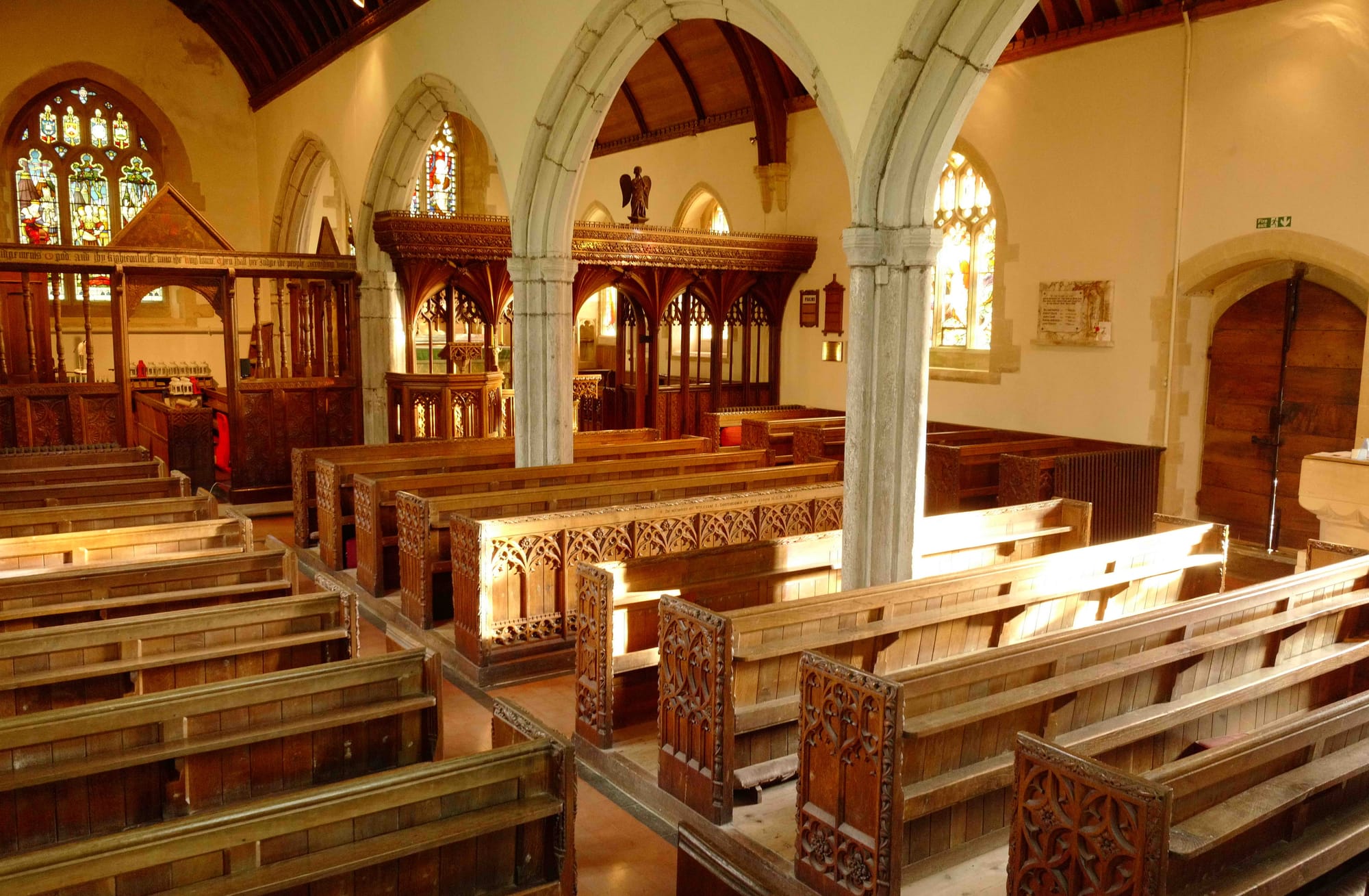
A bit of History (From: Some Old Devon Churches)
Between 1908 and 1916, John Stabb, an ecclesiologist and photographer who lived in Torquay, published three volumes of Some Old Devon Churches and one of Devon Church Antiquities. A projected second volume of the latter, regarded by Stabb himself as a complement to the former, did not materialize because of his untimely death on August 2nd 1917, aged 52. Collectively, Stabb's four volumes present descriptions of 261 Devon churches and their antiquities.
ROSE ASH. St. Peter. The church [plate 195a] consists of chancel, nave, north aisle separated from the nave by three arches, south porch, and west tower with five bells. The church is dedicated to St. Peter, but it seems probable, as the old church revel is held on St. James' Day [July 25th], that the original dedication was to the latter saint.
In 1888 the building was found to be unsafe, and the church, with the exception of the tower and the north west wall, was entirely rebuilt. The chancel is separated from the nave by a Perpendicular screen of plain character, the groining and cornice are gone, but the lower panels are good and contain rich tracery. The lights are short, and wide for the height, with thick central mullions. Before the restoration there was an old "tympanum" filling the space over the screen and bearing a painting of 18th century date with a symbolic device of the Eye of God in the centre with issuing rays.
The north aisle continuation of the screen was replaced in Jacobean times [ca. 1603-1625] by a screen of interesting character, consisting of light balustrades, the lower panels having shallow carvings. The parclose screen [plate 195b] is of the same date as the north aisle screen and of the same design. The frieze of both screens has a series of painted texts. On the north side of the parclose screen and the east side of the aisle screen are the texts:- "I exhort that first of all supplications, prayers, intercessions, and giving of thanks be made for all men, for kinges and all thinhs that are in authoritie." "Kinges shall be thy nursing fathers and queenes shall be thy nursing mothers; they shall fall before thee with their faces flat upon the earth." Over the text on the aisle screen is a board with arms of Anne of Denmark, Queen of James I [r. 1603-1625], and over the parclose text are the badge and motto of the Prince of Wales; on the south side of the same board is the inscription:- "Pray continually in all good things, and give thanks, for this is the will of god in Christ Jesus toward you."
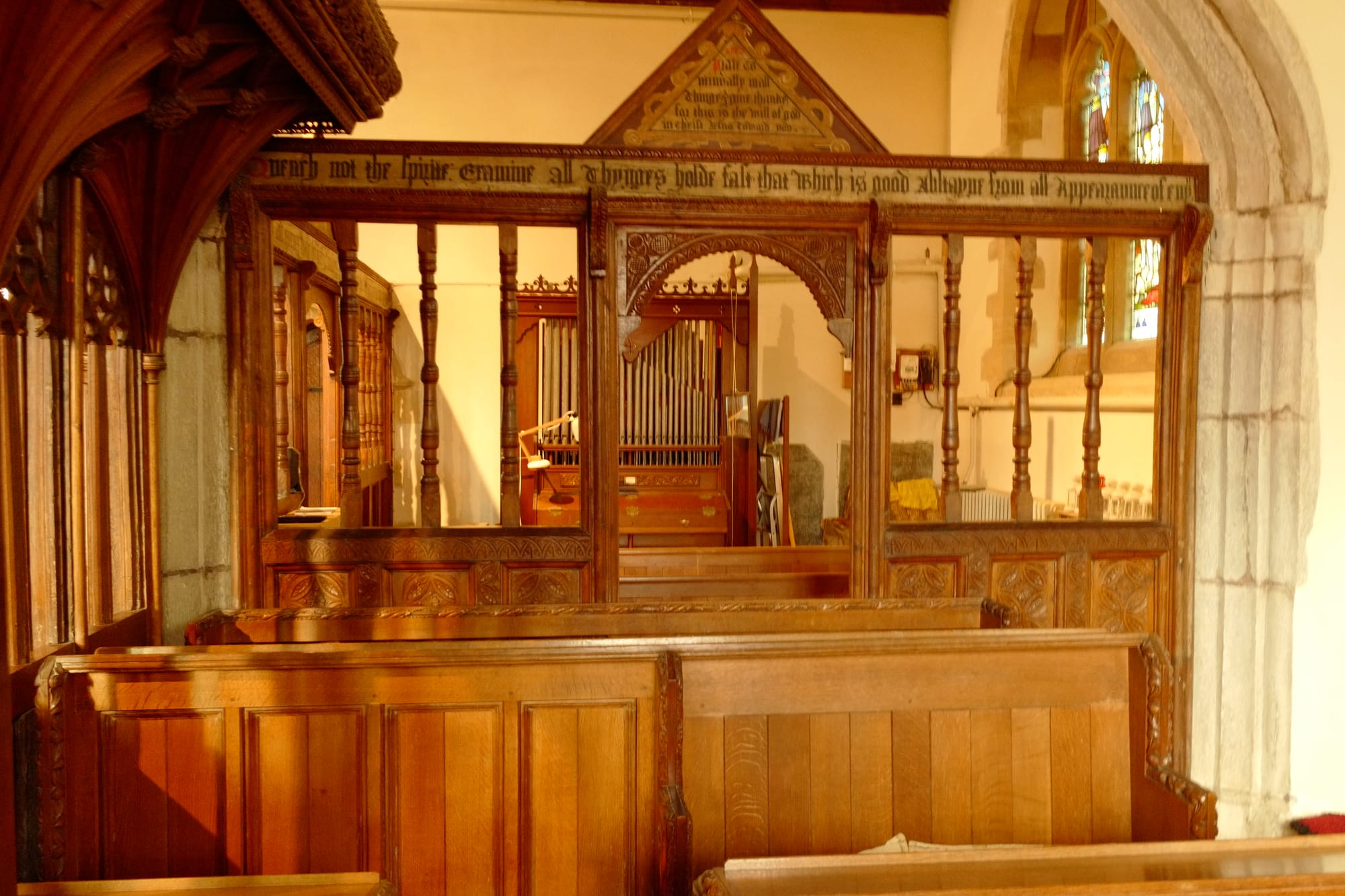
On the frieze is the text:- "Quench not the spirit, examine all Thinges holde fast that which is good, Abstayne from all appearance of evil. On the west side of the north aisle screen is the date "1618, iv, I.M." and on the frieze the text:- "Give the king the Judgements O god, and thy righteousness unto the kinges sonne. Then shall bee Judge the people according unto right." The triangular board over bears the arms of George I [r. 1714-1727].
There is a piscina in the chancel; the altar rails probably date from the time of Queen Anne [1702-1714]. The pulpit was erected in 1893 in memory of Rev. Edmund Southcomb, rector of the parish from 1822 to 1854. The carved bench-ends are modern but very good, they bear the emblems of the Passion; the sponge, nails, hammer, pincers, ladder and cross, the seamless robe, scourge and pillar, crown of thorns, money bag, etc. The chiming apparatus is in memory of J. A. H. Loosemore, who died on October 12th 1902. The belfry screen was given by Harriette Southcomb in 1893.
The floor of the belfry and porch are made from the old tiling of the roof. The five bells have the following inscriptions:- (1st) "Glory to God in the highest." W.E. 1728. (2nd) "Prepare ye the way of the Lord." W.E. 1728. (3rd) "Fear God, Honour the King." W.E. 1728. (4th) "The Lord is at hand." William Evans. Bellfounder 1728; John Dodge and John. W. Tanner. Churchwardens. 1728 (5th) Revd. J. Southcomb Rector. J. T. Day; J. Tanner churwardens 1806. Bilbie of Cullompton, Bellfounder.
The registers date from 1591.
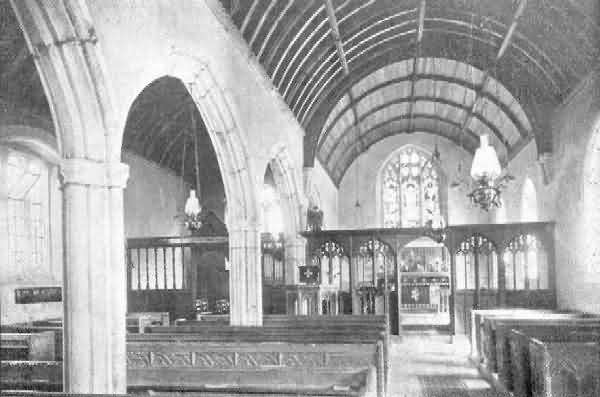
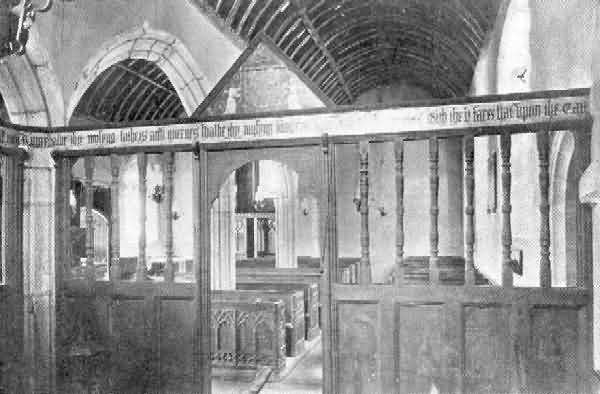
If you would like to help us to maintain our church, please use the QR code below to make a donation via your mobile. Thank you.
